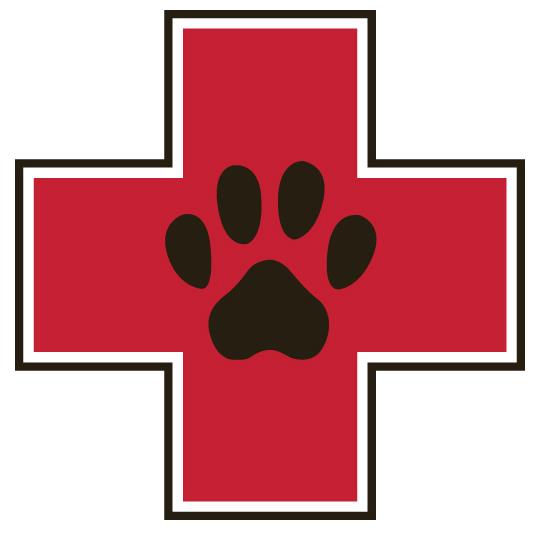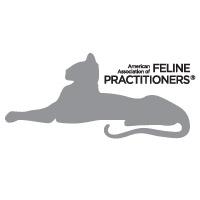Library
-
Cats were once considered solitary creatures. We now know that they are, in fact, social animals who benefit from interaction with their own and other species. However, not all cats are social with other cats. The personality of each cat must factor into the decision to introduce a new cat to your home.
-
Constipation is defined as an abnormal accumulation of feces in the colon resulting in difficult bowel movements. Constipation is a condition seen most commonly in mature, middle-aged cats and can be caused by hairballs, ingestion of foreign bodies, pelvic injuries, or obesity and/or lack of exercise. Megacolon is the most common cause of constipation in cats. In most cases, a diagnosis of constipation can be made on the basis of the cat's clinical signs and medical history. Treatment varies depending on the cause of constipation. The long-term outlook varies according to the cause of the constipation; however, most cats can be adequately managed without surgery and resume normal, healthy lives.
-
Constipation is infrequent or difficult passage of stool or feces and is typically a temporary condition. Though there are many causes of constipation in dogs, most cases are caused by ingestion of irritating or indigestible substances. Constipation is usually diagnosed through a physical examination and medical history. A rectal exam to rule out rectal strictures, tumors, foreign bodies, or other abnormalities may be done. Abdominal radiographs, blood tests, and urinalysis are valuable for a full diagnosis and development of a treatment plan. Biopsies may also be recommended if a rectal mass or stricture is suspected. Most cases of constipation are relatively easy to treat through the use of manual removal, enemas, and medications. The prognosis for constipation is determined by the exact cause.
-
Conures are considered small- to medium-sized birds and are characterized by long slender bodies, long tapered tails, and large beaks. Tame conures can be very affectionate, social birds that demand a moderate amount of daily attention. Conures are not well known for their capacity to speak but often scream loudly. Some conures commonly kept as pets include the jenday conure, blue-crowned conure, nanday conure, mitred conure, sun conure, green-cheeked conure, and maroon-bellied conure. Young birds may be easier to tame and train than older, wild-caught, or colony- or parent-raised birds. New birds should be exposed early to different events to help them become calmer, more well-adjusted pets. After bringing your new bird home, you should have it examined by a veterinarian familiar with birds to help ensure that it is healthy. Like all other pet birds, conures require annual, routine veterinary health check-ups.
-
A Coombs’ test is used to test for a disease called autoimmune hemolytic anemia (IMHA). IMHA is a condition where the immune system breaks down or destroys red blood cells, leading to anemia. The test detects the presence of immunoglobulins (antibodies) on the surface of red blood cells. Taken together, the physical findings and the laboratory data (such as a Coombs’ test) may suggest that immune-mediated destruction of red blood cells is the most likely cause of your pet's anemia.
-
Coonhound paralysis is a sudden inflammation of multiple nerve roots and peripheral nerves in dogs, and occasionally cats. It can be caused by an immune reaction to raccoon saliva. It can also occur in dogs who have not encountered a raccoon. In this case, it is called acute idiopathic polyradiculoneuritis, and its cause is often unknown. Dogs with coonhound paralysis start out with a stiff-legged gait that rapidly progresses to paralysis of all four legs. Good nursing care is essential for recovery.
-
Corkscrew tail, also known as screw tail or ingrown tail, is a vertebral malformation that commonly occurs in certain dog breeds. Corkscrew tail is commonly observed in English Bulldogs, Pugs, Boston Terriers, and French Bulldogs, although it may also occur in other breeds. Corkscrew tail is an inherited condition. There is nothing that you can do to prevent your dog from developing corkscrew tail, but there are measures breeders can take to reduce the incidence of corkscrew tail in their litters.
-
Corneal dystrophy is a term used to describe several conditions that occur in dogs and cause the corneas to become opaque. There are three major categories of corneal dystrophy: epithelial, stromal, and endothelial. Each is named by the anatomic location of the abnormal tissue and opacity.
-
Corneal lipidosis is an accumulation of fatty substances within the cornea. This is caused by genetics (corneal dystrophy), eye inflammation (corneal degeneration), or by an increase in circulating lipids in the body (hyperlipidemia). Visually, lipidosis appears as a sparkly or shiny area of the cornea. It is diagnosed by a thorough eye exam, bloodwork, and patient history. Treatment and prognosis will depend on the cause and may include treatment of underlying inflammatory conditions of the eye, or systemic treatment of elevated lipid blood levels.
-
Ulcerative keratitis is inflammation in the cornea of the eye. The signs of ulcerative keratitis depend somewhat on the cause and how long the condition has been present. There are many potential causes of ulcerative keratitis, including trauma, infection, and abnormal tear production. Antibiotic ointment or drops will be prescribed and it is important to prevent additional trauma to the cornea. Superficial corneal ulcers typically heal within 5 to 7 days. Deeper or more complicated ulcers may take several weeks to heal and may require surgery in addition to medical treatment.




